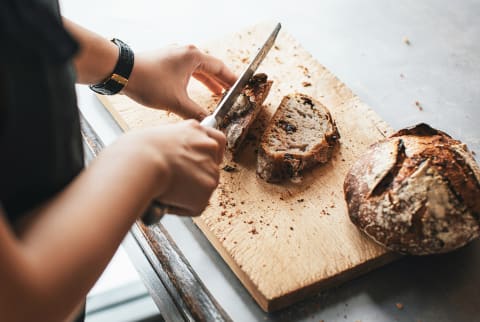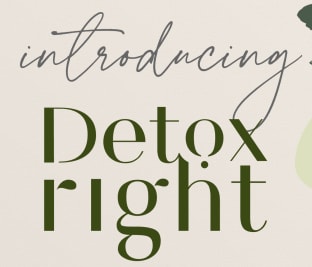Medical doctor
Medical doctor
Dr. Chen is a medical doctor with 15 years of clinical experience. She is board certified in the UK in both internal medicine and family practice, and now lives in California with her family.

Image by Lumina / Stocksy
March 19, 2023
Our editors have independently chosen the products listed on this page. If you purchase something mentioned in this article, we may
Do you put your plastic cutting boards into the dishwasher? If so, you may be exposing yourself to hormone-interfering endocrine disrupters. Here’s what to know.
Advertisement
This ad is displayed using third party content and we do not control its accessibility features.
What I consider the biggest problems with plastic cutting boards.
Plastic cutting boards are marketed as being the most sanitary option because they are anti-microbial and can be put into a dishwasher, making them easy to clean.
However, plastic contains endocrine disruptors like BPA1 and phthalates2. Under certain conditions (e.g. heat, sun), plastic can leach these substances3. A study in 2022 found that putting reusable plastic water bottles into the dishwasher4 encouraged the migration of chemicals from the bottle into the drinking water inside. It is likely that the same applies to plastic cutting boards.
You may think you are sanitizing your cutting boards by putting them into a hot wash in your dishwasher, but in reality, this may be loosening harmful chemicals from the plastic that can get into your food the next time you use the board.
In addition, cutting creates deep grooves in the plastic where bacteria can linger, which makes used plastic cutting boards very difficult to fully disinfect in a dishwasher. You really need to be using a brush to get into those grooves. So if you do use a plastic board, opt to give it a good scrub yourself instead of placing it in the dishwasher.
In one older study5 out of the University of Wisconsin, researchers placed several bacteria, including E. coli and Salmonella, on both used and new wood and plastic cutting boards. The wood cutting boards consistently outperformed the plastic boards in terms of bacterial safety. Moral of the story? Wooden cutting boards may turn out to be more sanitary than plastic, and prove better for your hormonal health (provided they don’t use plastic-containing glues to stick the wooden pieces together).
Some plastic cutting boards are also coated with antibacterial substances to prevent bacteria from growing, but this only trades in bacteria growth for other chemicals, often endocrine disrupters. A very common antibacterial chemical used for such purposes is Microban, which contains the antibacterial ingredient triclosan6. The FDA does not recognize triclosan as safe due to its hormone-disrupting properties6. While triclosan has been phased out of handwash and sanitizers7, it still lurks in other everyday products—including cutting boards.
Some people also use strong chemicals, such as bleach diluted with water, to clean plastic cutting boards. That creates the fearful possibility of contaminating your food with such chemicals. If you’ve ever put tomato or turmeric-rich foods into a plastic container, you’ll see that it turns red or yellow. This is because the ingredients have seeped into the matrix of the plastic. Harsh cleaning agents could also be seeping into your board, potentially contaminating the food you cut on it.
Advertisement
This ad is displayed using third party content and we do not control its accessibility features.
OK, so plastic is bad news… what’s a better material?
Thankfully, there are plenty of alternatives to plastic cutting boards that are just as easy to use but safer for your health.
Glass, for example, is a non-porous surface that does not provide places for bacteria to linger. Like plastic boards, glass ones can also be cleaned in the dishwasher. However, glass boards do have some downsides. Cutting on glass can be loud, and since glass is breakable, it’s a risky material for households with children or pets. The hard surface of glass boards also dulls knives quickly (as do ceramic and marble boards). So glass boards may be most useful for rolling dough or doing other kitchen tasks that don’t involve cutting.
I personally look for solid one-piece wood cutting boards that are made without glue and finished with a non-toxic oil such as beeswax or fractionated coconut oil instead of petroleum-based mineral oil/wax. Koehl Karpentry and Mamma Mangia are two of my favorite small brands, but you can also find a local woodworker who can make a board for you out of solid wood (black walnut is my go-to).
I find it best practice to use two different cutting boards for my meats and my fruits and vegetables.
The takeaway.
Swapping out your plastic cutting board for a wood option is one quick strategy for reducing toxins at home. For more ways to create a safer home and support your detox organs using science-based methods (without the gimmicky quick fixes that don’t work), join my signature course Detox Right. Use code MBG200 to get $200 off.
Advertisement
This ad is displayed using third party content and we do not control its accessibility features.

